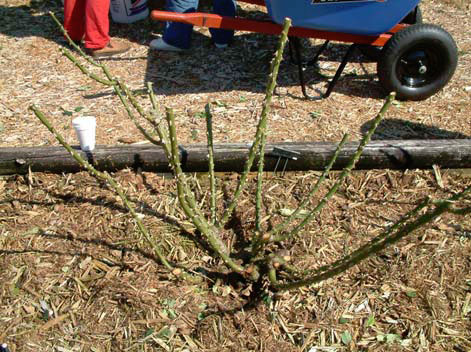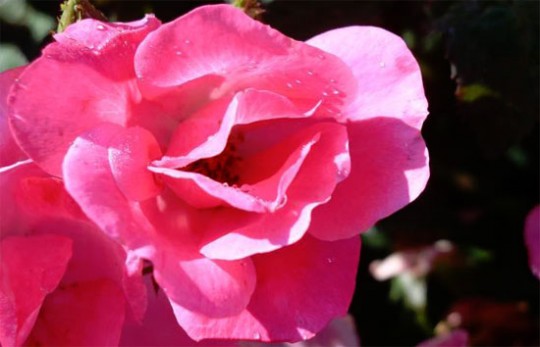Think Roses In February
February 12, 2011
 With Valentine’s Day just around the corner, out thoughts go to roses. Roses grown in Florida require regular maintenance, but growing roses can be a rewarding hobby for those who like to spend time in the garden each week. Pruning will help keep your plants healthy and productive.Hybrid tea and grandiflora roses, in particular, should be pruned every year during the first or second week in February. Otherwise, these roses tend to become leggy, less vigorous and unattractive, and they won’t bloom as well.
With Valentine’s Day just around the corner, out thoughts go to roses. Roses grown in Florida require regular maintenance, but growing roses can be a rewarding hobby for those who like to spend time in the garden each week. Pruning will help keep your plants healthy and productive.Hybrid tea and grandiflora roses, in particular, should be pruned every year during the first or second week in February. Otherwise, these roses tend to become leggy, less vigorous and unattractive, and they won’t bloom as well.
Other types of roses, such as floribunda, shrub and everblooming old garden roses, generally require less drastic pruning, but they still benefit from pruning to improve their shape or control their size, when necessary.
Following a logical sequence of steps while pruning will help make the job seem less complicated. The first step is to remove the three D’s: any dead, diseased or damaged wood. Cut the stems one inch below darkened areas, making sure you are cutting back to green wood. Make the cut at a 45 degree angle about ¼‐inch above an outward facing bud. If no live buds remain, remove the entire cane. Weak, spindly canes, which are the diameter of a pencil or less, should also be removed the same way.
 To avoid dieback and encourage rapid healing, pruning cuts should be made just above a dormant bud (eye). When an entire branch is removed, make a smooth cut at the point of juncture.
To avoid dieback and encourage rapid healing, pruning cuts should be made just above a dormant bud (eye). When an entire branch is removed, make a smooth cut at the point of juncture.
The second step is to remove branches that grow toward the center of the plant. This opens up the plant for better air circulation and allows sunlight to penetrate the inner portion of the plant. The third step is to locate crossing branches and remove the weakest one. Crossing branches may rub against each other, causing abrasions that may serve as openings for disease organisms to enter the plant. Also remove sucker growth, which is growth coming from below the bud union. Sucker growth can be from the root stock and a different rose variety; if not removed, sucker growth will crowd out the desired variety
Finally, prune to shape the plant. Hybrid teas, grandifloras and floribundas can be pruned 12 to 24 inches in height, leaving up to four to eight large, healthy canes the diameter of your finger or larger. Shrub and species roses should be pruned lightly, removing no more than 1/3 of the growth. Miniature roses need only minimal pruning. Old‐fashioned roses and climbers that bloom only once a year should be pruned
 Immediately after flowering. Do not prune these types of roses heavily in the early spring since they bloom on wood from the previous year’s growth. If you have purchased new rose bushes you don’t have to worry about pruning them. Newly purchased roses have already been pruned, and no further pruning is required.
Immediately after flowering. Do not prune these types of roses heavily in the early spring since they bloom on wood from the previous year’s growth. If you have purchased new rose bushes you don’t have to worry about pruning them. Newly purchased roses have already been pruned, and no further pruning is required.
Pruning back roses takes some getting used to. Many new gardeners have a hard time getting up the nerve to cut their bushes back. If you don’t, however, the result will be tall, rangy, overgrown bushes that will not be nearly as attractive.
Theresa Friday is the Residential Horticulture Extension Agent for Santa Rosa County.




Comments